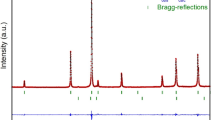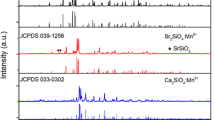The sensibility of luminescent properties in transition metal doped materials to the matrices' chemical environment is explained in this paper, this is because of their strong phonon-electron coupling which are caused by the 3d electrons exposed nature. The influence of the chemical environments on the Mn2+-doped materials' optical properties, including the structure type of coordinate polyhedron, the polyhedral bridge linking manner and the lattice parameter, was illustrated in detail in this work. The impact of crystal field strength parameter (10 Dq) on the maximum energy differentiae in spontaneous emission band of Cr3+:4T2g→4A2g and in excited state absorption band 4T2g→4T1g (4F), and covalent bond intension's impact on the optical properties of Os4+ were also analyzed. This work's purpose is to discover the principle of the sensibility character, then we can use it to optimal the design of materials in order to find the excellent luminescent materials for practical utilization.





Similar content being viewed by others
REFERENCES
Z. L. Fang (1992). Semiconductor Luminescent Materials and its' Apparatus, Fudan University Press, Shanghai, China, pp. 275–297 (in Chinese).
X. E. Yu (1997). Practicality Luminescent Materials and Optronics Mechanism, China Light Industry Press, Beijing, pp. 6–33 (in Chinese).
Z. G. Xiao (2002). Light Deposit Materials and its' Production [M], China Light Industry Press, Beijing, pp. 191–208 (in Chinese).
J. Y. Sun, H. L. Du, and W. X. Hu (2003). Solid State Luminescent Materials, Environment Science and Engineering Print Centre of Chemical Industry Press, Beijing, pp. 14–18 (in Chinese).
J. Y. Li (2003). Rare Earth Doped Luminescent Materials and its' Application, Materials Science and Engineering Print Centre of Chemical Industry Press, Beijing, pp. 14–16 (in Chinese).
L. W. Yang, Z. W. Liu, and S. G. Xiao (2002). Nat. Sci. J. Xiangtan Univ. 24(4), 29 (in Chinese).
F. Su, Z. Deng, and Z. Jiang (2005). J. Funct. Mater. 36(5), 655–657 (in Chinese).
Z. Yang, S. Xu, L. Hu, et al. (2004). J. Alloys Compd. 370, 94–98.
G. M. Salley, O. S. Wenger, K. W. Kramer, et al. (2002). Curr. Opin. Solid State Mater. Sci. 6, 487–493.
O. S. Wenger, M. Wemuth, and H. U. Gudel (2002). J. Alloys Compd. 341, 342–348.
R. Valience, O. S. Wenger, and H. U. Gudel (2000). Chem. Phys. Lett. 320, 639–644.
C. Reinhard, P. Gerner, R. Valiente, et al. (2001). J. Lumin. 94/95, 331–335.
P. Gerner, O. S. Wenger, R. Valiente, et al. (2001). Inorg. Chem. 40, 4524–4542.
M. Diaz, L. R. Cases, et al. (1999). J. Lumin. 81, 53–60.
O. S. Wenger and H. U. Gudel (2001). J. Chem. Phys. 114, 5832–5841.
J. X. Zhang (2001). Optoelectronics, South China University of Technology Press, Guangzhou, China, p. 177.
O. S. Wenger and H. U. Gudel (2002). Chem. Phys. 117(2), 909–913.
H. W. H. Lee, S. A. Payne, and L. L. Chase (1989). Phys. Rev. B 39, 8907–8914.
R. Moncorge and T. Benyalton (1988). Phys. Rev. B 37, 5229–5238.
S. Heer, M. Wermuth, K. Kramer, et al. (2002). Phys. Rev. B 65, 125112–125121.
S. Heer, M. Wermuth, K. Kramer, et al. (2001). J. Lumin. 95/96, 337–341.
M. Wermuth and H. U. Gudel (2000). J. Lumin. 87–89, 1014–1016.
M. Wermuth and H. U. Gudel (2001). Chem. Phys. 114(3), 1393–1404.
M. Wermuth and H. U. Gudel (1999). J. Am. Chem. Soc. 121(43), 10102–10111.
ACKNOWLEDGMENTS
This work was supported by National Natural Science Foundation of China (Grant No. 60307004 and 50472053), Natural Foundation of Guangdong Province, PR China (Grant No. 04200036), Science and Technology Program of Guang Zhou, Guang-dong province, PR China (Grant No. 2004Z2-D0131 and 2004A10602002).
Author information
Authors and Affiliations
Corresponding author
Rights and permissions
About this article
Cite this article
Su, FN., Deng, Z. Influence of Chemical Environment on the Optical Properties in Transition Metal Ions Doped Materials. J Fluoresc 16, 43–46 (2006). https://doi.org/10.1007/s10895-005-0031-2
Received:
Accepted:
Published:
Issue Date:
DOI: https://doi.org/10.1007/s10895-005-0031-2




